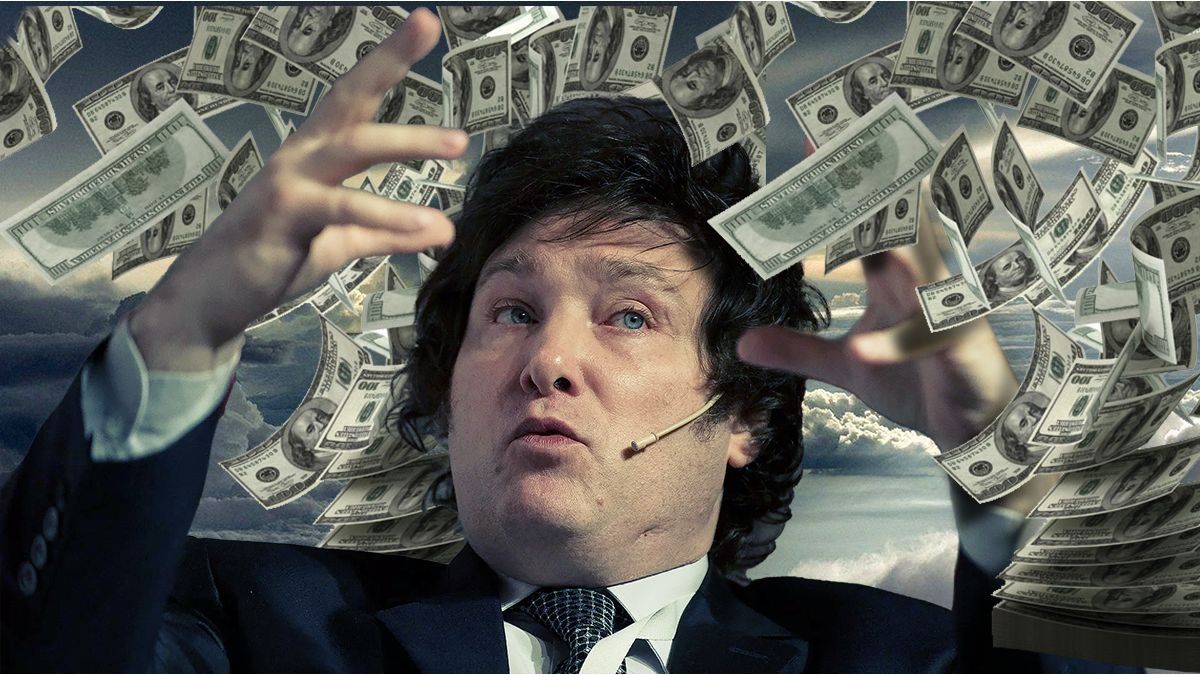Although the spot price closed at $363.70, the market traded a wholesale dollar at $500 for next Monday at SIOPELthe system of Electronic Open Market (MAE) in which the official exchange rate negotiations are carried out. This responds to the expectation regarding the change of government, which will take place this Sunday, to the prices that are negotiated in the futures market, and to the recent news regarding what may happen to the price of the peso. the new management.
And it is expected that a devaluation will be implemented – the most pre-announced in recent times – that will take the value of the US currency to at least zone of $470-$500 at 48 hours or T+2 (38% more than the cash price)according to the operations of this Wednesday, although some clarifications are worth while.
Basically what happened on this day was the completion of a handful of operations arranged between private parties, for about US$4.5 millionbut to be settled next Monday (this Friday is a holiday), although without being validated by the Central Bank. “They are operations with a closing date of Monday. They assume the risk,” they pointed to Ambit sources close to the monetary authority, when asked about the dynamics that were observed in the wheel.
Thus, The devaluation of the peso will not necessarily be validated at these values, they may be higher (as indicated by the futures market, which operated from the end of December to $769.95, or 111.7% more than this Wednesday’s spot values), or lower.
“Ultimately what these operations between private parties marked is that the wholesale segment itself is discounting a fairly significant increase in the exchange rate, below the levels that are even expected,” he commented to Ambit the analyst Salvador Vitelli.
“This does not indicate or confirm that there is going to be a devaluation,” reinforced Gustavo Quintana, from PR Change Operators. It happens that it is not yet confirmed that progress will be made in this regard. Without going much further, last week, the market also negotiated a higher exchange rate for the official one when, from Thursday to Friday, a devaluation was expected to arrive that in the end did not happen. But, as stated Quintana, “In this case, it is more justified by the change of government and the rumors about what will happen to the dollar.”
The risk, according to the economist Gabriel Caamaño from his social network account official exchange market (the MULC)but without explicit references to anything.”
It is worth noting that it is Banco Nación, the entity that sets the official closing of the exchange rate based on the last price operated in the cash segment. It does not take into account the prices that are traded T+1 and T+2 to determine the closing value. “What was carried out on Monday were hedging operations, which surely have some basis in some pass that some banks have. We must not forget that financial entities cannot increase that position, they were not speculative purchases, it was something that was to operate and the Central did not intervene in that period, given that it does not depend on the current administration, and surely it was not interested in intervening there”, explained a market source.
Dollar: what the futures market says
Beyond the price that was agreed for next Monday, The futures market heated up again this Wednesday on the Matba-Rofex, with a firm rise in prices in all terms, highlighting the increase in the exchange rate for next June (+5.3%). Next, we review the variations and prices recorded by the contracts:
December 2023: +4.2% to $769.95.
January 2024: +3.9% to $870.
February 2024: +4.2% to $958.
March 2024: +4% to $1,040.
April 2024: +4.9% to $1,130.
May 2024: +4.3% to $1,225.
June 2024: +5.3% to $1,300.
Dollar: BCRA accelerated sale of reserves
The price of the stock market dollars marks ups and downs, the Cash with Settlement (CCL) rises $5.07 and the MEP falls fifty-four cents, in a day in which the Central Bank (BCRA) sold US$149 million.
So far in December, the BCRA has made sales in the Single and Free Exchange Market (MULC) for US$365 million, said market analyst Gustavo Quintana.
In the stock market segment, exchange rates marked a mixed trend at the close of the day: the CCL dollar advanced 0.6%, to settle at $914.59; while the MEP fell 0.1% and stood at $934.17.
In the informal market, the so-called “blue” dollar stood at $945 for sale and $925 for purchase, with an increase of 35 pesos compared to Tuesday.
In the wholesale market, the US currency ended in a range between $362.70 and $363.70 per unit, sixty cents above yesterday’s close.
“With only one wheel left to finish this week, the wholesale dollar accumulates a rise of $2.60 against the $3.50 final rise of the previous week,” Quintana said.
Meanwhile, the retail dollar – based on Banco Nación screens – was fifty cents higher than what was recorded yesterday, at an average of $379 for sale and $361 for purchase.
For its part, the price for card purchases abroad increased 0.08%, at $972.34.
The volume operated today in the cash segment was US$302,678 million, in the futures sector of the Electronic Open Market (MAE) operations were recorded for US$60 million and the Rofex futures market for US$260 million.
Source: Ambito
I am a 24-year-old writer and journalist who has been working in the news industry for the past two years. I write primarily about market news, so if you’re looking for insights into what’s going on in the stock market or economic indicators, you’ve come to the right place. I also dabble in writing articles on lifestyle trends and pop culture news.




